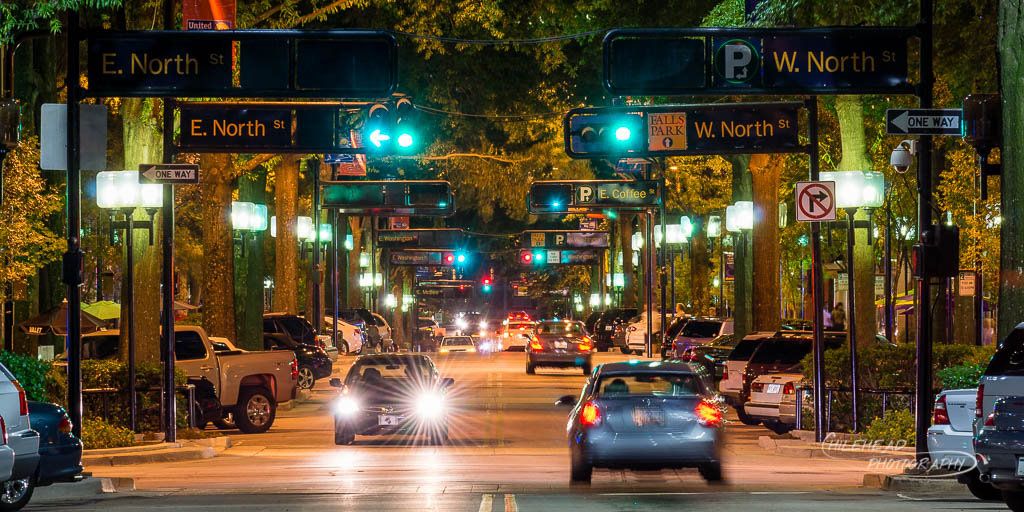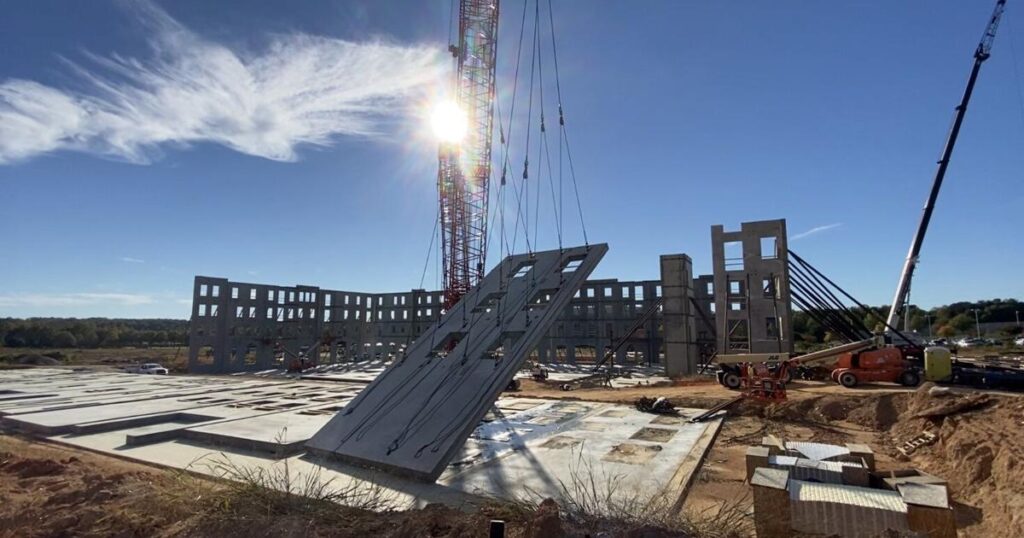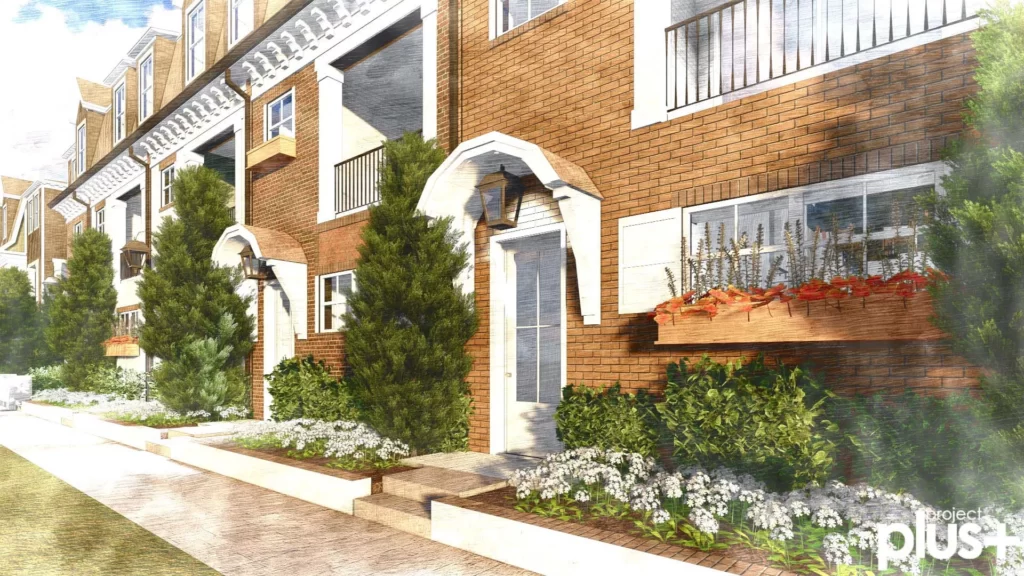HOA Management in Mauldin, SC
The city of Mauldin is one of Greenville’s largest suburbs, priding itself on offering big-city opportunities with small-town hospitality.
Boasting top-rated public schools, a number of parks and recreational opportunities, and immediate proximity to the Blue Ridge Mountains, it is no wonder why Mauldin is one of South Carolina’s fastest growing cities. William Douglas Property Management respects Mauldin’s commitment to its history and to its future, and therefore offers HOA management with careful attention to the needs of each residential community we serve. Please contact us today to find out more!
Mauldin, South Carolina Facts
Mauldin, South Carolina, also referred to as the City of Mauldin, is centrally located roughly in the middle of Greenville County. Mauldin is a suburb of the City of Greenville and approximately 11 miles from downtown Greenville. The U.S. Census 2019 population estimate for Mauldin was 25,409. Mauldin’s zip code is 29662. Mauldin’s area code is 864.
The first settler of European descent to move to what would become Mauldin was Benjamin Griffith (1745 – 1811). Griffith received a land grant of 100 acres in 1784. This original 100 acres is what would eventually become the City of Mauldin. Before Mauldin became Mauldin, the area was known as “Butler’s Crossroads” and “Butler’s Corners.” This was named after Willis William Butler, who moved to the area in 1868.
The Mauldin name originated when a railroad route was proposed in the 1880s, which would have bypassed Mauldin. At the time, area residents contacted South Carolina Lt. Governor W.L. Mauldin to lobby for his support of the route going through Mauldin. He was able to persuade the railroad owners to adjust the route through the town, which was subsequently named for him in 1886.
Mauldin was incorporated in 1890; however, this charter was revoked or surrendered. It was common for the General Assembly to revoke the charter if a chartered town did not activate or fulfill it. The town was successfully reincorporated in 1910. The Town of Mauldin voluntarily asked to have their town charter revoked in 1932. The town government and services were reinstated in 1957 by a vote of the town citizenry.
Mauldin is located within Greenville County, which was established by the South Carolina Legislature in 1786. Although there is no known documentary evidence, the county was reportedly named for Nathanael Greene. Green was an American Revolutionary War Continental Army major general. Greene was responsible for the strategy that led British General Charles Cornwallis to pursue him and his Patriot forces through North Carolina. This pursuit strategy is what eventually led to the British surrender at Yorktown. This naming of the county was surely in tribute to Greene’s leadership and success in the South during the American Revolution.

Per the United States Census Bureau for Mauldin (for 2010 unless otherwise noted)
Census Pop. %±
1960 1,462 —
1970 3,797 159.7%
1970 3,797 159.7%
1990 11,587 42.3%
2019 25,409 (est.) 11.0%
2000 15,224 31.4%
2010 23,184 50.3%
Population per 2010 Census: 23,184
Male population: 46.2%
Female population: 53.8%
Population under 18 years: 22.3%
Population 65 years & over: 15.2%
High school graduate or higher 2015-2019: 93.5%
Bachelor’s degree or higher 2015-2019: 35.5%
Median home value 2015-2019: $163,800
Owner-occupied: 69.8%
Total households 2015-2019: 9,968
As of the 2012 U.S. Census, Mauldin had 1,760 businesses within the city limits.
A Brief History of Mauldin
Mauldin’s history begins with the first permanent settlement in South Carolina in 1670, Charles Town, which was later renamed Charleston. While the colonization of South Carolina was at first predominantly in the coastal region, settlers began moving deeper into the interior by around 1700. This interior settlement increased exponentially in the mid-18th century.
While most of the South Carolina colony was open to European settlers, the Cherokee territory was not. The Cherokee territory was the far western part of the colony. This territory, for the most part, is located in present-day Anderson, Greenville, Oconee, and Pickens counties. The Cherokee would maintain sovereignty over this territory until they were forced to relinquish it in 1777.
The Cherokee had been dealing with settlers encroaching on their territory long before the American Revolution. However, the American Revolution brought this issue to a head with the Cherokee. As a result, the Cherokee and other Native American tribes allied with the British against the American Patriots. Thus, the Cherokee and other Native American tribes instituted raids against settlers in South Carolina and neighboring states in 1776. This became known as the Cherokee War of 1776.
In response to these Indian raids, state militias, along with a limited number of Continental soldiers, began a three-prong retaliatory attack against Cherokee villages in the region. In these retaliatory raids, almost all of the Indian villages and crops in the region were burned. An unknown number of people on both sides were killed, but it is estimated to be in the hundreds. The Cherokee War of 1776 ended in 1777 with the signing of the Treaty of DeWitt’s Corner. One of the mandates of this treaty was that the Cherokee Indians would surrender almost all of their territorial land in South Carolina. This territorial land comprised most of present-day Anderson, Greenville, Oconee, and Pickens counties.
The sale of the land within the former Cherokee territory did not occur until after the Revolutionary War in 1784. The General Assembly established Greenville County in 1786. The population increased as more settlers arrived via the Great Wagon Road from Philadelphia and some from the South Carolina ports.
Benjamin Griffith was the first individual of European descent to settle in what was to become Mauldin. He arrived in 1784 and took possession of his land grant of 100 acres. The City of Mauldin’s first city limits encompassed much of this original 100 acres.

In the latter part of the 1800s, the area first became known as “Butler’s Corners” or “Butler’s Crossroads.” Presumably, this was because Willis William Butler, who moved there in 1869, had a home located at the crossroads of Laurens Road and Reedy River Road. This location in present-day Mauldin is the intersection of Main Street and Butler Road.
The area that would become Mauldin began to flourish with the arrival of the Greenville & Laurens Railroad (G&L RR) in 1886. The G&L RR tracks and depot were completed that year. The rail line was laid roughly two hundred yards east, parallel to Laurens Road (i.e., present-day Main Street). The train route from Greenville to Laurens and stops that developed include Greenville, Mauldin, Simpsonville, Fountain Inn, Powers Shop (Power), Dorroh (Gray Court), Highland Home (Barksdale), Nannie (Narnhill), Laurens. The arrival of the railroad was the most significant economic event to ever occur in Mauldin.
The Greenville & Laurens Railroad merged into the Port Royal & Western Carolina Railroad (PR & WC RR) in 1886. The Port Royal & Western Carolina Railroad was forced by the South Carolina Legislature in 1896 to re-organize into the Charleston & Western Carolina Railroad (C&WC). The Charleston & Western Carolina Railroad merged with the Atlantic Coast Line Railroad of South Carolina in 1897. The Atlantic Coast Line Railroad of South Carolina operated into the mid-20th century. The rail line that was laid east of Laurens Road (i.e., present-day Main Street) in 1886 is still in operation today.
Coinciding with the arrival of the Greenville & Laurens Railroad in 1886 was the town name of “Mauldin.” The city derives its name from William Lawrence Mauldin (1845 – 1912). W.L. Mauldin was a state senator from Greenville County who became Lieutenant Governor of South Carolina in 1886. W.L. Mauldin was also the president of the Greenville & Laurens Railroad. Residents of Butler’s Crossing contacted him and encouraged him to run his railroad through their community. Once the railroad arrived in 1886, the citizenry began referring to their community as “Mauldin” in honor of W.L. Mauldin’s decision to run the rail line through the community. In 1890, Mauldin received its first charter from the South Carolina General Assembly, and the town name “Mauldin” became official.
Even though the Town of Mauldin was incorporated in 1890, this incorporation was rescinded or relinquished. It was not uncommon during this era for the South Carolina General Assembly to rescind a charter if a chartered town neglected to properly fulfill their charter. Twenty years later, Mauldin was once again successfully incorporated in 1910. The charter defined the town’s boundaries or limits as a one-mile radius from the water well at the corner of what is now Main Street and Cox Street.
Twenty-two years later in 1932, Mauldin Mayor W.E. Murray, M.D. reportedly voluntarily relinquished the town charter due to the economic adversity brought on by the Great Depression. However, newspapers at that time report that the citizenry of Mauldin were dissatisfied with the lack of municipal services. These same newspaper articles did not note any economic reasons for these disincorporation actions. At the time of this disincorporation, Mauldin did not have a town hall, police department, city jail, or fire department.
Apart from the arrival of the Greenville & Laurens Railroad in 1886, the next most significant economic event was when the Mauldin-Simpsonville-Fountain Inn Water District laid down a water line along Laurens Road in 1953. This all began when a group of forward-thinking citizens of Mauldin, Simpsonville, and Fountain Inn, joined forces and paid to have a survey performed. This group then petitioned to have a special bond vote for one million dollars in bonds to fund a sixteen-inch water line to their cities. This water line traveled down Laurens Road, originating in Greenville, going through Mauldin and later Simpsonville, and ending at Fountain Inn. This new waterline eventually attracted an unprecedented amount of industrial development along its route, and has been a key economic driver for the entire area ever since. This was such an economic driver that over time the area that this water line reached was bestowed the name, “The Golden Strip.”

The first new business to utilize the new water line was “Her Majesty Underwear Company.” In 1953, this company built a plant in Mauldin to produce women’s and children’s clothing. Within five years, they had over 550 employees. C.F. Sauer Company came to Mauldin in 1955 and opened a manufacturing facility. Texize Chemicals constructed a plant in Mauldin in 1956. These three employers within three years of the new water line had created hundreds of new jobs in Mauldin.
The next large economic event was the completion of U.S. Highway 276 through Mauldin in 1957. This thoroughfare from Greenville to Columbia was a marvel of its time. Before the Interstate Highway System was fully conceived, let alone built, there were not many direct roads such as U.S. Highway 276.
The Town of Mauldin looked to reincorporate in 1957. Upon further research, it was discovered that the town was still incorporated, just that the charter was inactive. The charter was reactivated by a citizenry vote of 115 for and 106 against. Mauldin’s first fire department was formed in 1958 with all volunteers. The first Mauldin Town Hall was constructed in 1961.
Mauldin’s economic growth in the 1950s through present day has drastically increased the population. Mauldin’s 1960 U.S. Census indicated a population of 1,462. The U.S. Census estimated population in 2019 was 25,409. The economic growth of both Greenville and Spartanburg has spread to the suburbs in many forms, most notably with housing. Lower housing costs and the convenience of U.S. Interstate 385 have turned Mauldin into a great commuter community. Mauldin has developed a diverse business base that has made economic downturns less severe and the job market more resilient for citizens of the city.
Need Association Management?
Contact Us
How to Start
The Process of Working With Us


REQUEST A PROPOSAL
Request a proposal online or call us directly.


WE WILL REVIEW YOUR CASE
Our team of highly trained professionals will review your case.


RECEIVE A CUSTOM TAILORED PLAN
We will create a customized management plan for your community.


SEAMLESS TRANSITION
We will implement a seamless management transition and integrate our tech.


SIT BACK & RELAX
Enjoy better, affordable and a more reliable, hassle-free management system.




